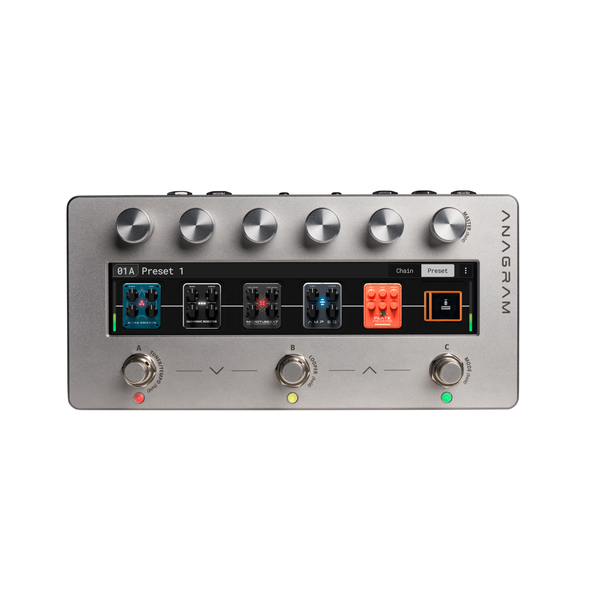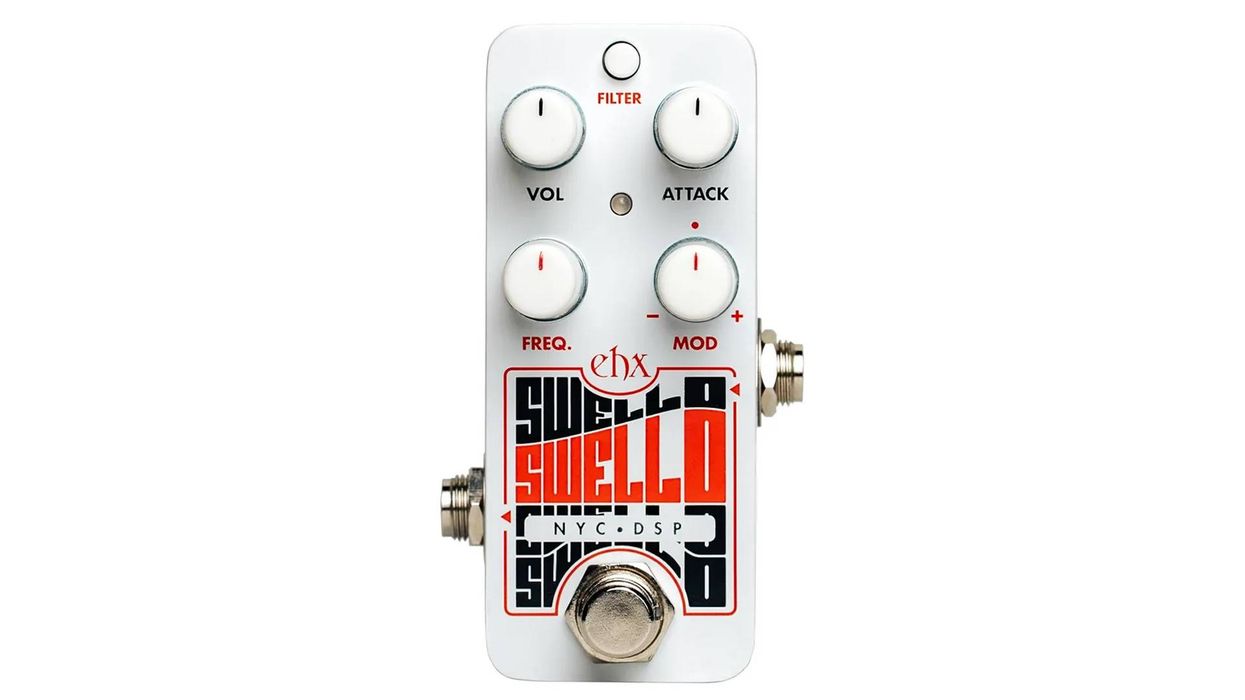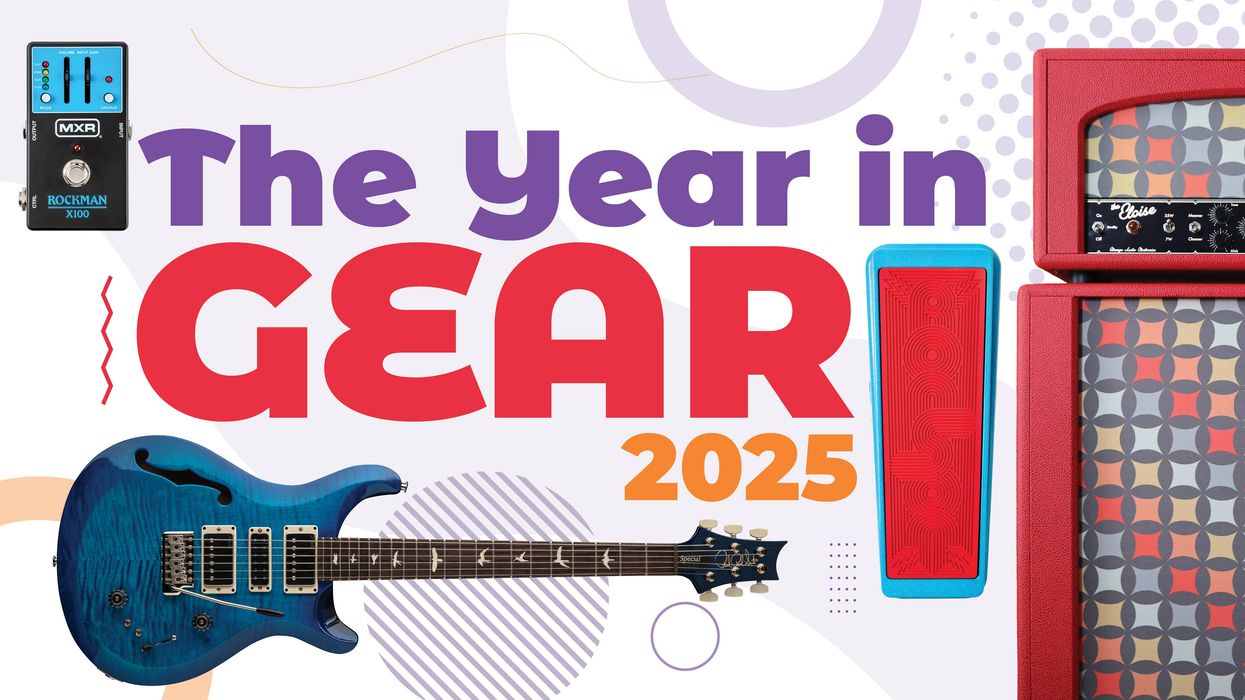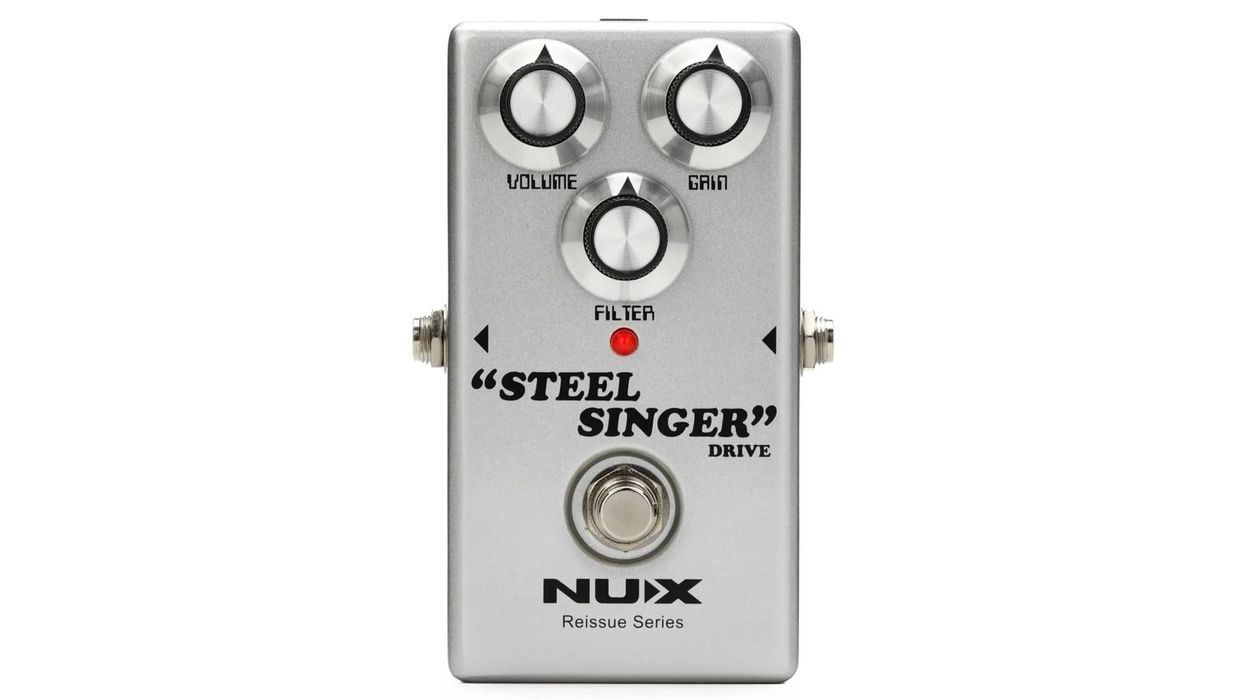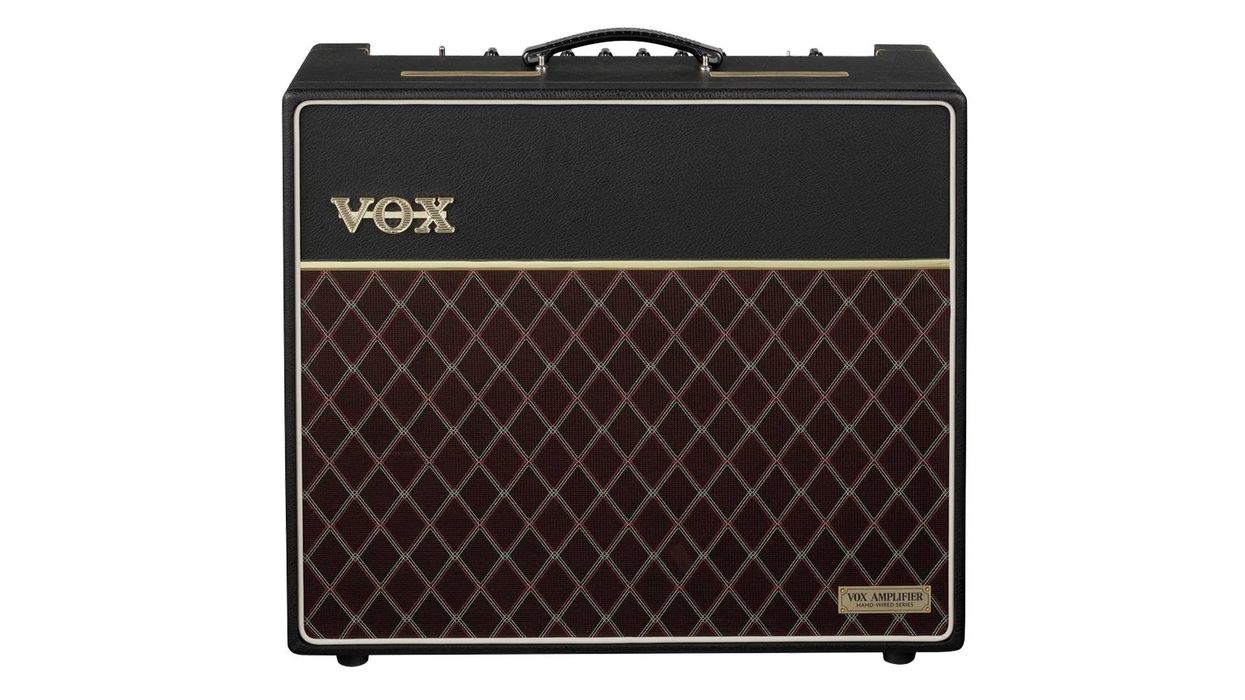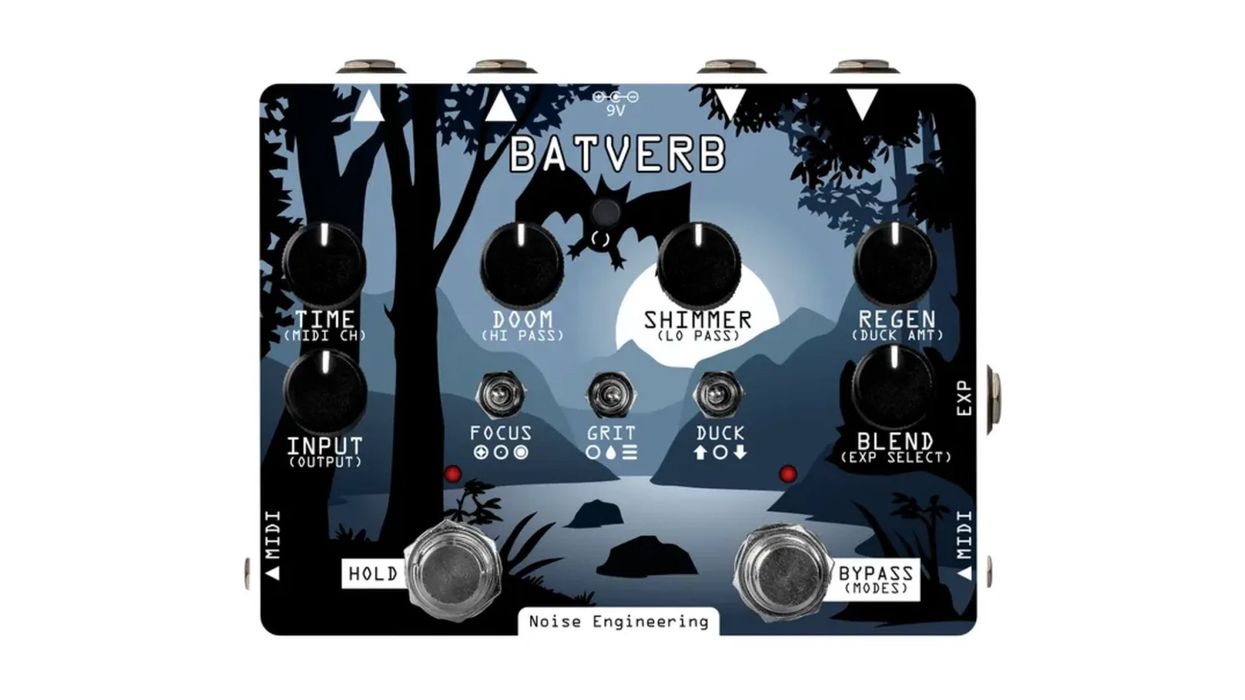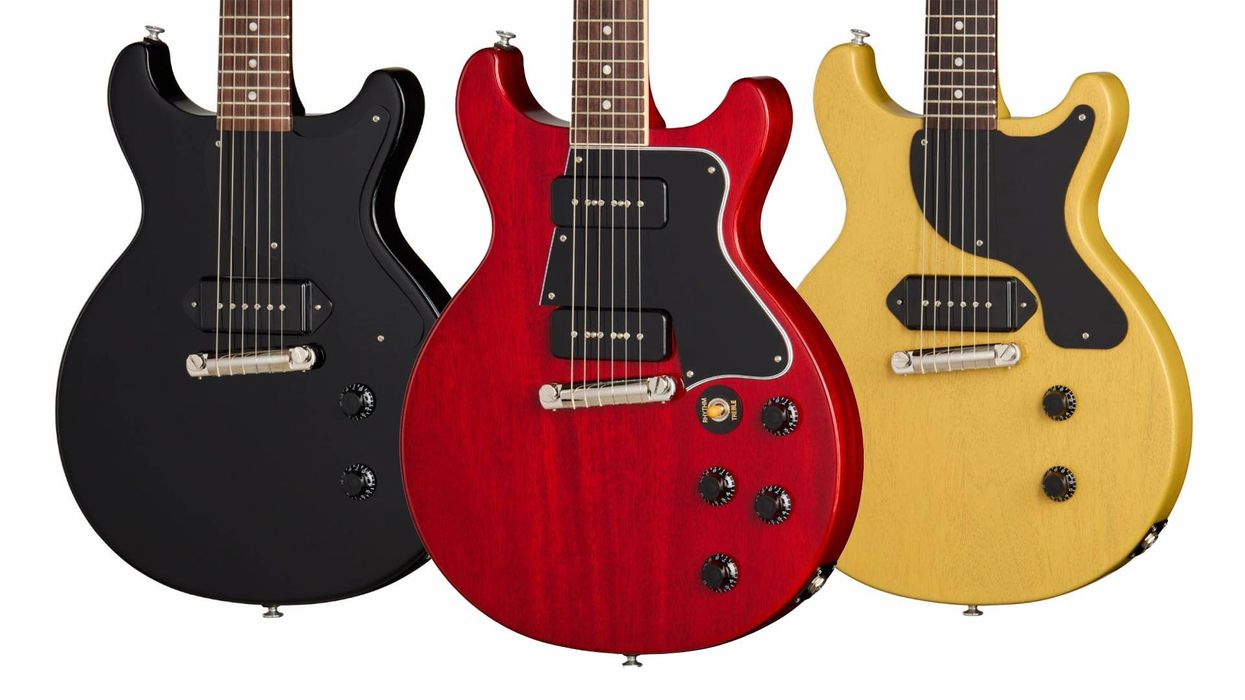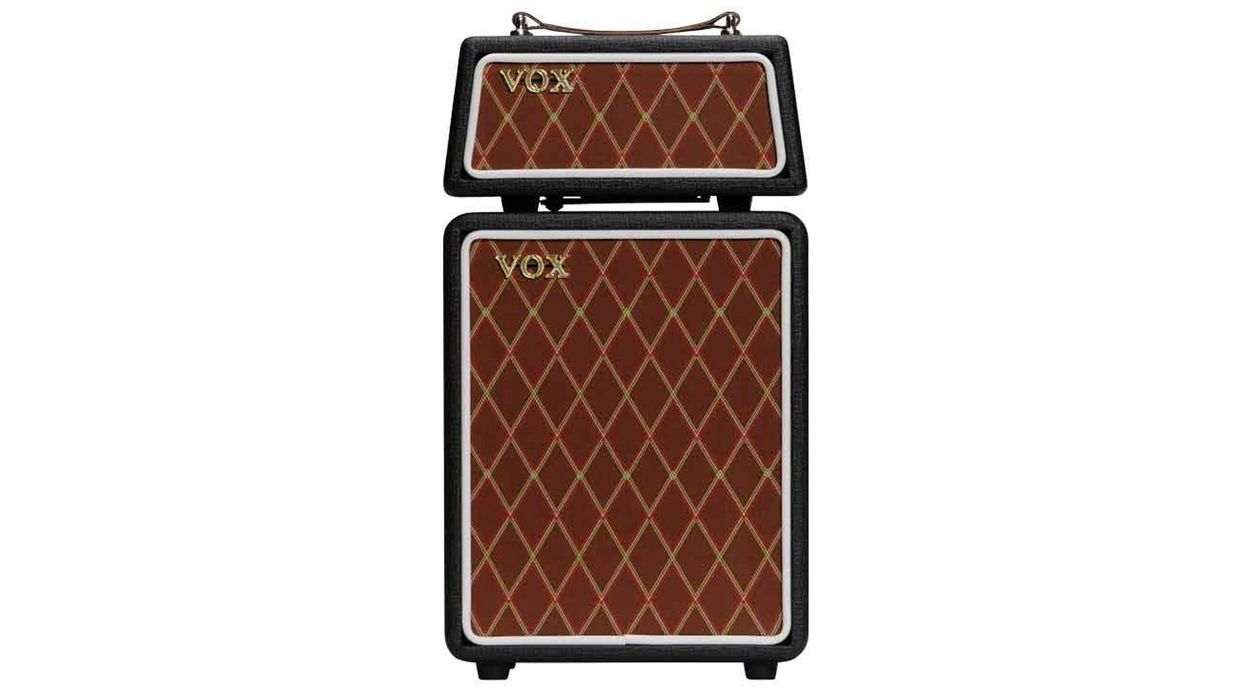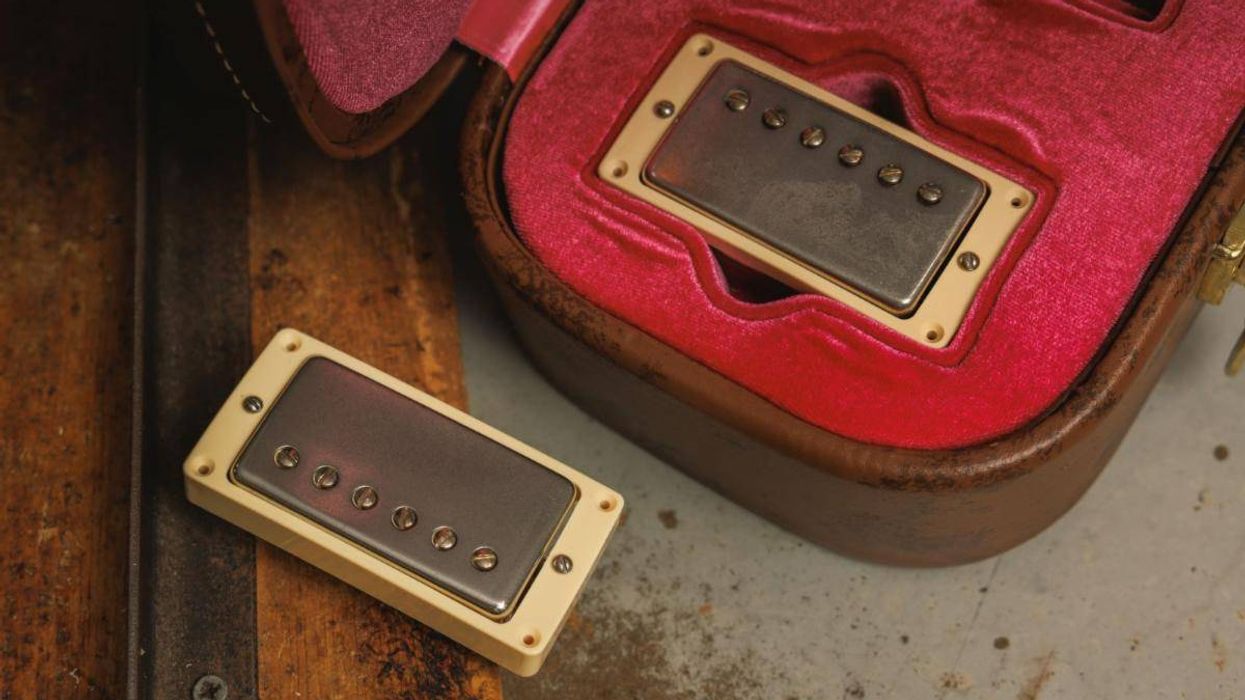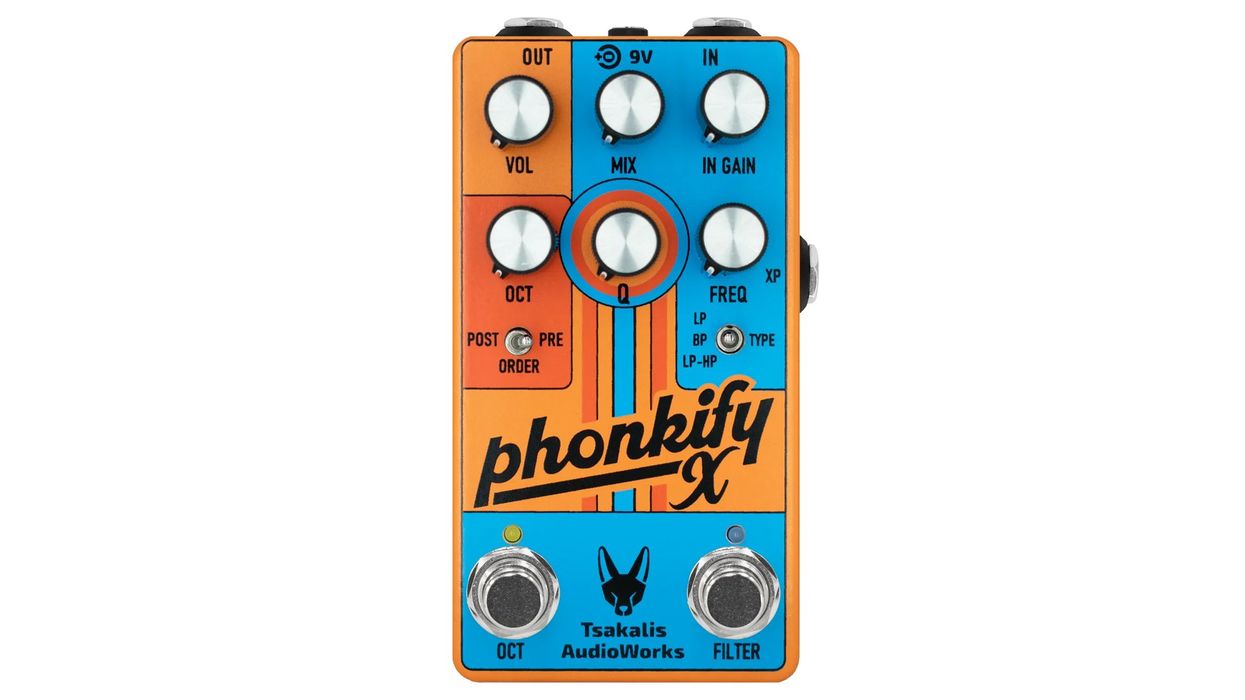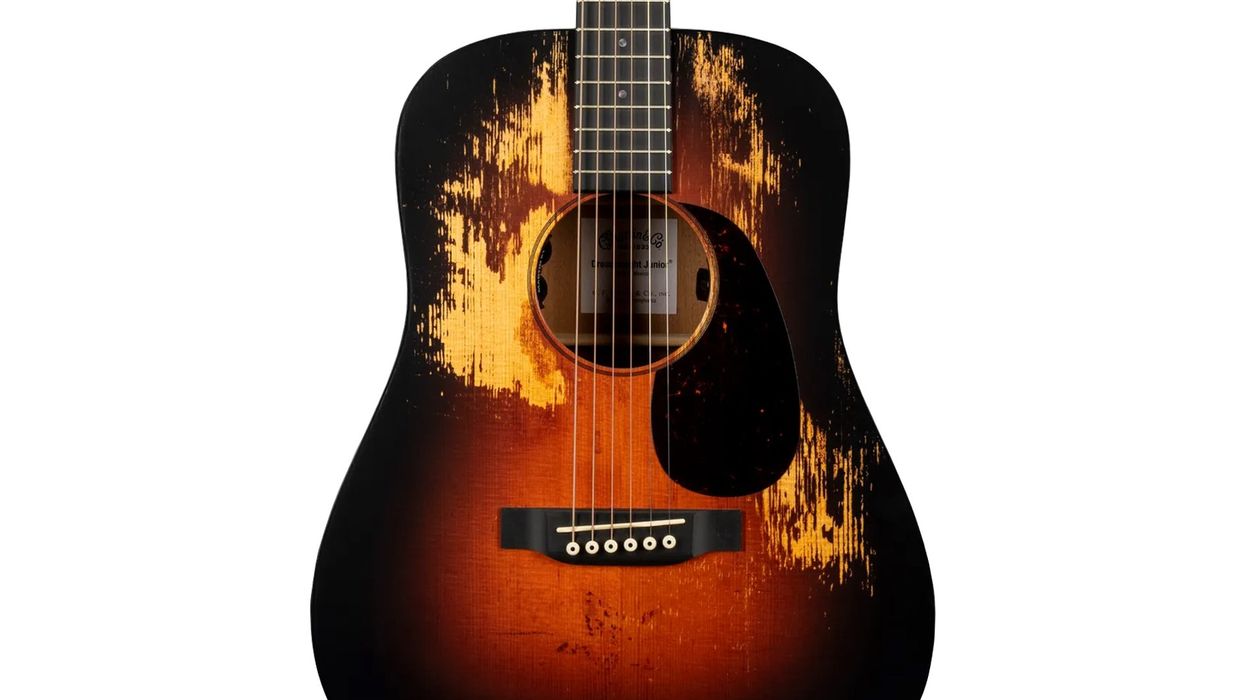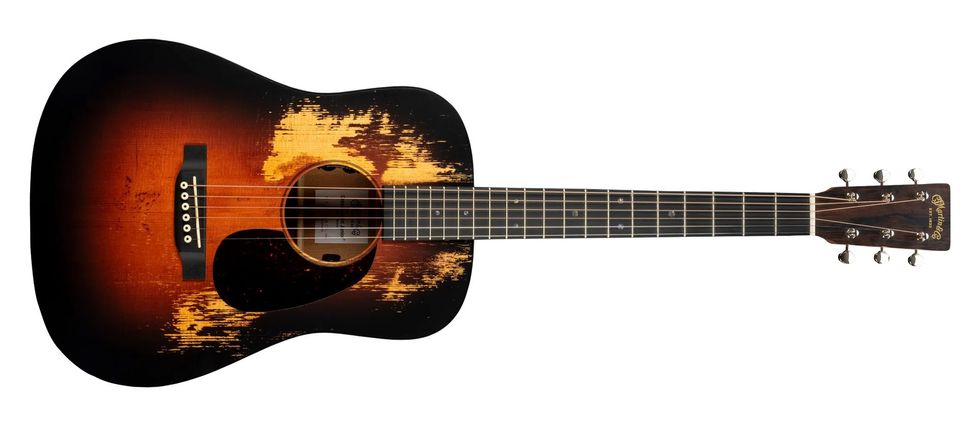Darkglass Electronics is a bass player’s company. And like many bass-centric brands, they sometimes seem determined to ensure that guitar players aren’t the only ones having fun when it comes to amps and effects. If that’s true, the DSP-driven Anagram may be their most impressive form of revenge yet.
All The Things, All So Small
The Anagram is a sleek unit with just three footswitches and six knobs above the touch screen. Plug in the unit (there’s no on/off) and the screen lights up, welcoming you to your journey. It’s an inviting interface, and it’s hard to avoid the impulse to just start tapping and scrolling.
Connection options are plentiful: There’s a send and return that can be configured as a stereo effects loop or a mono loop and expression pedal input, a 1/8" headphone jack, and a USB-C port along with two 1/8" MIDI ports for connecting an external MIDI controller and sending MIDI. Four outputs take up half of the back panel, with two XLRs and two 1/4" jacks.
Looking Through the Darkglass
There are 19 pages of tutorial you can scan on the touch screen after the initial power up, but that shouldn’t be discouraging. The Anagram is, in general, easy to grasp. There are three modes that can be used to navigate its many features. Preset mode uses footswitches to move between presets, though there will be an audible gap when you switch between them. Stomp mode allows you to use the footswitches to toggle between three virtual stompoxes within a preset, so you can, for instance, use the chorus on a bridge and overdrive for your bass solo. The deeper scene mode enables you to seamlessly switch between scenes, which can include completely different groups of pedals and settings. Think of it as an octopus switching multiple stomps and turning knobs for you all at once.
Three screen views are available: chain, bindings, and name. Chain view provides the most pedalboard-like representation of the signal path. This is where you can manage and route your preset’s effects in an efficient, more “analog” way. It’s intuitive and the most direct way to create a preset from scratch or reshape an existing one. Bindings mode allows access to parameters within a preset and enables you to assign the most critical controls to the six knobs at the top of the Anagram. Name mode displays—you guessed it—the name of the active preset. It’s the easiest readout to see in a low-light stage setting. But if any of the individual views don’t serve your purposes, the modes can be combined in multiple configurations.
The Anagram makes editing global settings a breeze. Hold down the sixth knob to enter mixer mode, where you can control the L/R and XLR outputs—either individually or linked for consistent volume—as well as the headphone and master outputs. Tapping the “EQ” box in this screen takes you to the very precise global EQ, where you can adjust gain, width, and frequency in a range from 25 Hz to 16.0kHz.
Ana-tons of Tone
With more than 50 effects (Darkglass says that thousands of additional effects and amps are available via integration with the Neural Amp Modeler), Anagram's factory presets are a great place to begin exploration. I jumped down the rabbit hole starting with Factory preset 01—“harmonic booster.” In this preset, there are six elements in the chain, and when one of the six knobs along the top row are pressed, the corresponding effect goes dark, signaling that the effect is off. The same six knobs also control user-defined parameters within the effect, or a virtual speaker cab, if you switch one into the chain. Once you’re happy with your tweaks, you tap the three dots on the touch screen and save the preset. It’s really simple. Swapping effects within a preset is just as quick—tap the pedal icon you want to change, and you’ll jump straight to its edit screen.
While the sounds are superb, the Anagram truly shines in its ease of programmability and the precision with which you can switch things up.
Paired with my passive, J-bass-style Bluesman Vintage Eldorado, the harmonic booster preset was enough to make my day. Though there are 12 effect blocks available—or 24 in parallel—in that preset, only five are used in its factory preset form, permitting me to add rich chorus and octave to the already satisfying tone. The depth of familiar effects and amps is impressive. With searing overdrives, signature Darkglass pedals, and a super-wide range of bass-centric effects, I was like a kid in a candy store. And there are also 20 cab options and a boatload of mic options that can be situated in different positions relative to the cab. The options are seemingly endless.
The Verdict
The Anagram is ideal in a lot of settings. For fly dates, it’s compact and easy to re-program if, say, you add a new song to the set on a whim. Provided there is a proper P.A., the unit is truly all you need to get the job done. Able to run the gamut of vintage and modern sounds, it could be a cover-band bass player’s best friend. And while the sounds are superb, the Anagram truly shines in its ease of programmability and the precision with which you can switch things up. From an economic standpoint, the Anagram is the equivalent of purchasing several traditional floor pedals … and then getting hundreds more for free. At just under $1,200, that’s math that makes sense.
